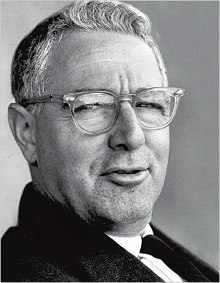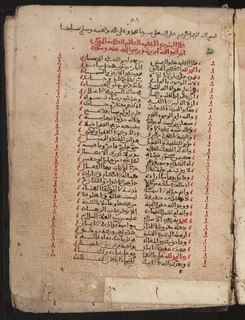Related Research Articles
Free verse is an open form of poetry, which in its modern form arose through the French vers libre form. It does not use consistent meter patterns, rhyme, or any musical pattern. It thus tends to follow the rhythm of natural speech.
In poetry, metre or meter is the basic rhythmic structure of a verse or lines in verse. Many traditional verse forms prescribe a specific verse metre, or a certain set of metres alternating in a particular order. The study and the actual use of metres and forms of versification are both known as prosody.

Poetry, also called verse, is a form of literature that uses aesthetic and often rhythmic qualities of language − such as phonaesthetics, sound symbolism, and metre − to evoke meanings in addition to, or in place of, a prosaic ostensible meaning. A poem is a literary composition, written by a poet, using this principle.
A quatrain is a type of stanza, or a complete poem, consisting of four lines.

William Carlos Williams was an American poet, writer, and physician closely associated with modernism and imagism.
A tercet is composed of three lines of poetry, forming a stanza or a complete poem.
A strophe is a poetic term originally referring to the first part of the ode in Ancient Greek tragedy, followed by the antistrophe and epode. The term has been extended to also mean a structural division of a poem containing stanzas of varying line length. Strophic poetry is to be contrasted with poems composed line-by-line non-stanzaically, such as Greek epic poems or English blank verse, to which the term stichic applies.
In languages with quantitative poetic metres, such as Ancient Greek, Latin, Arabic, Sanskrit, and classical Persian, an anceps is a position in a metrical pattern which can be filled by either a long or a short syllable.
Poetry analysis is the process of investigating a poem's form, content, structural semiotics and history in an informed way, with the aim of heightening one's own and others' understanding and appreciation of the work.
The Sapphic stanza, named after Sappho, is an Aeolic verse form of four lines. Originally composed in quantitative verse and unrhymed, since the Middle Ages imitations of the form typically feature rhyme and accentual prosody. It is "the longest lived of the Classical lyric strophes in the West".

Karl Jay Shapiro was an American poet. He was awarded the Pulitzer Prize for Poetry in 1945 for his collection V-Letter and Other Poems. He was appointed the fifth Poet Laureate Consultant in Poetry to the Library of Congress in 1946.
Shloka or śloka is a poetic form used in Sanskrit, the classical language of India. In its usual form it consists of four pādas or quarter-verses, of 8 syllables each, or of two half-verses of 16 syllables each. The metre is similar to the Vedic anuṣṭubh metre, but with stricter rules.
Choliambic verse, also known as limping iambs or scazons or halting iambic, is a form of meter in poetry. It is found in both Greek and Latin poetry in the classical period. Choliambic verse is sometimes called scazon, or "lame iambic", because it brings the reader down on the wrong "foot" by reversing the stresses of the last few beats. It was originally pioneered by the Greek lyric poet Hipponax, who wrote "lame trochaics" as well as "lame iambics".
Tail rhyme is a family of stanzaic verse forms used in poetry in French and especially English during and since the Middle Ages, and probably derived from models in medieval Latin versification.
Timothy Steele is an American poet, who generally writes in meter and rhyme. His early poems, which began appearing in the 1970s in such magazines as Poetry, The Southern Review, and X. J. Kennedy's Counter/Measures, are said to have anticipated and contributed to the revival of traditional verse associated with the New Formalism. He, however, has objected to being called a New Formalist, saying that he doesn't claim to be doing anything technically novel and that Formalism "suggests, among other things, an interest in style rather than substance, whereas I believe that the two are mutually vital in any successful poem." Notwithstanding his reservations about the term, Steele's poetry is more strictly "formal" than the work of most New Formalists in that he rarely uses inexact rhymes or metrical substitutions, and is sparing in his use of enjambment.
This is a glossary of poetry.
The following outline is provided as an overview of and introduction to poetry:

Basīṭ, or al-basīṭ (البسيط), is a metre used in classical Arabic poetry. The word literally means "extended" or "spread out" in Arabic. Along with the ṭawīl, kāmil, and wāfir, it is one of the four most common metres used in pre-Islamic and classical Arabic poetry.
Latin prosody is the study of Latin poetry and its laws of meter. The following article provides an overview of those laws as practised by Latin poets in the late Roman Republic and early Roman Empire, with verses by Catullus, Horace, Virgil and Ovid as models. Except for the early Saturnian poetry, which may have been accentual, Latin poets borrowed all their verse forms from the Greeks, despite significant differences between the two languages.

Rajaz is a metre used in classical Arabic poetry. A poem composed in this metre is an urjūza. The metre accounts for about 3% of surviving ancient and classical Arabic verse.
References
- ↑ Hirsch. Edward 'A Poet's Glossary', Houghton Mifflin Hsrcourt, Boston, 2014 ISBN 9780151011957
- ↑ Berry Eleanor, 'William Carlos Williams: Triadic-line Verse - An Analysis of its Prosody' Twentieth Century Literature Fall 35.3 1989
- ↑ Schmidt, Michael, Lives of the Poets, Weidenfeld & Nicolson, London 1998 ISBN 978-0753807453
- ↑ "Interview with Stanley Koehler", Paris Review Vol 6 April 1962
- ↑ Hartman, Charles, Free Verse an essay on Prosody, Northwestern University Press, Evanston 1996 ISBN 0-8101-1316-3
- ↑ Collected Poems ed. Christopher MacGowan, Collected Poems Vol II, Carcanet Press, Manchester, 2000 ISBN 1-85754-523-0